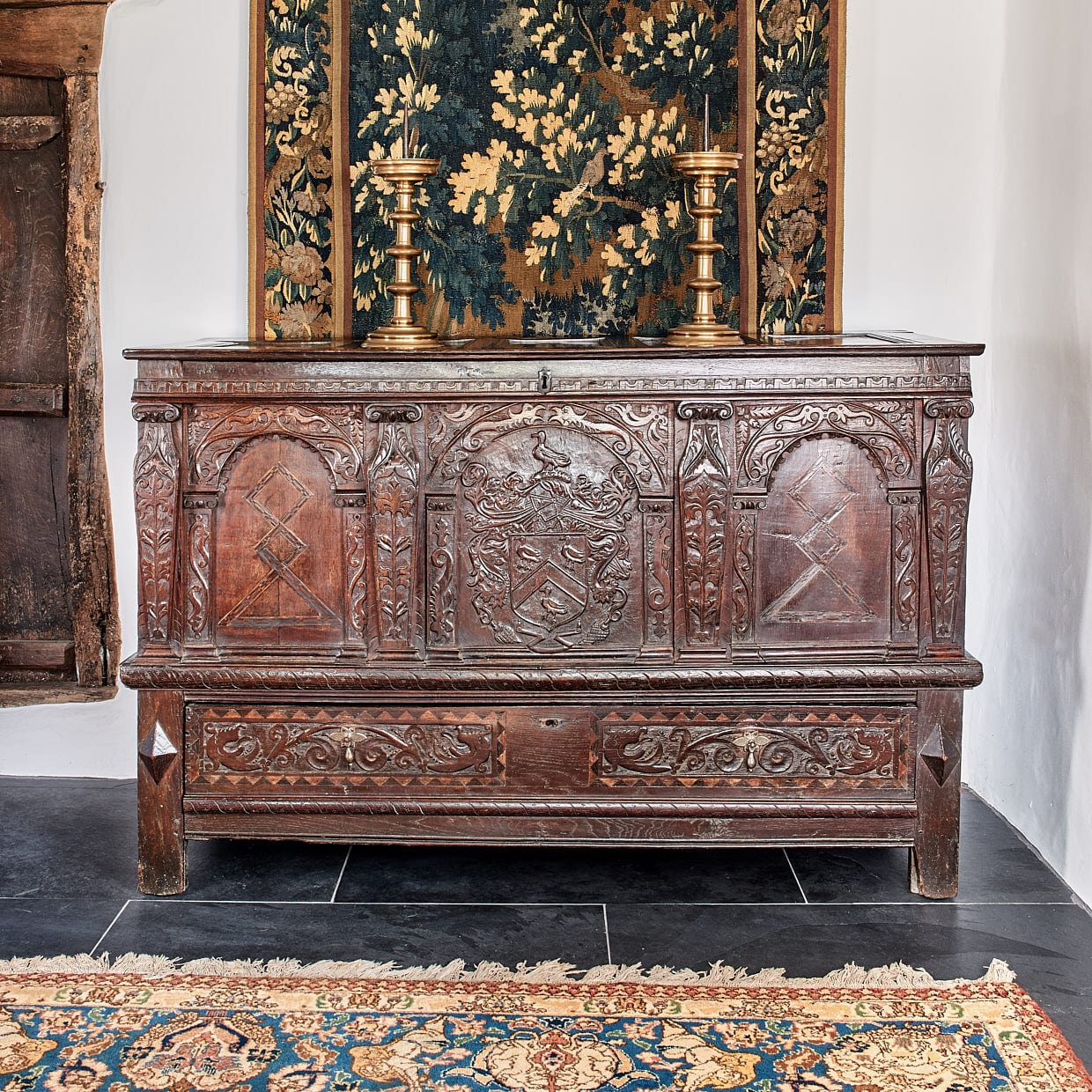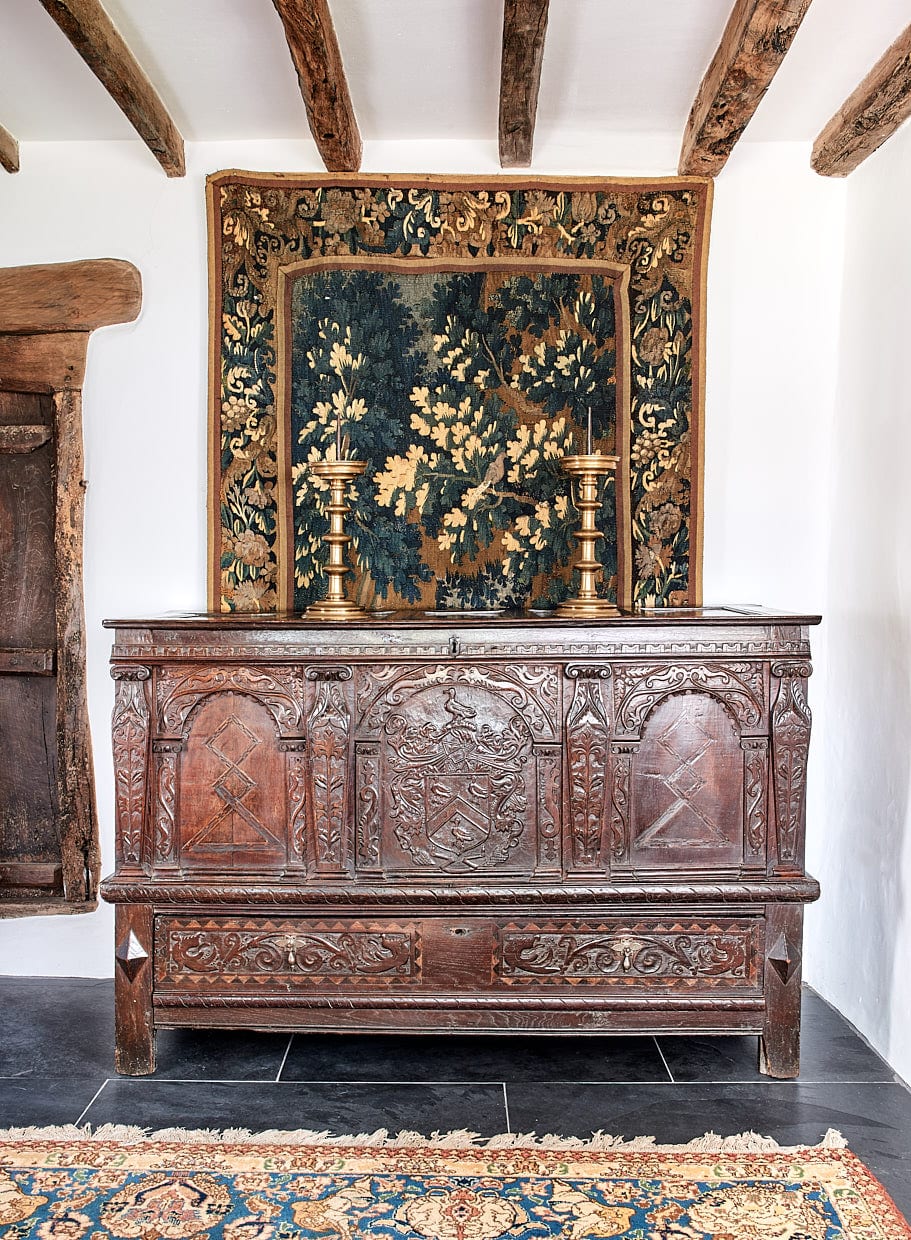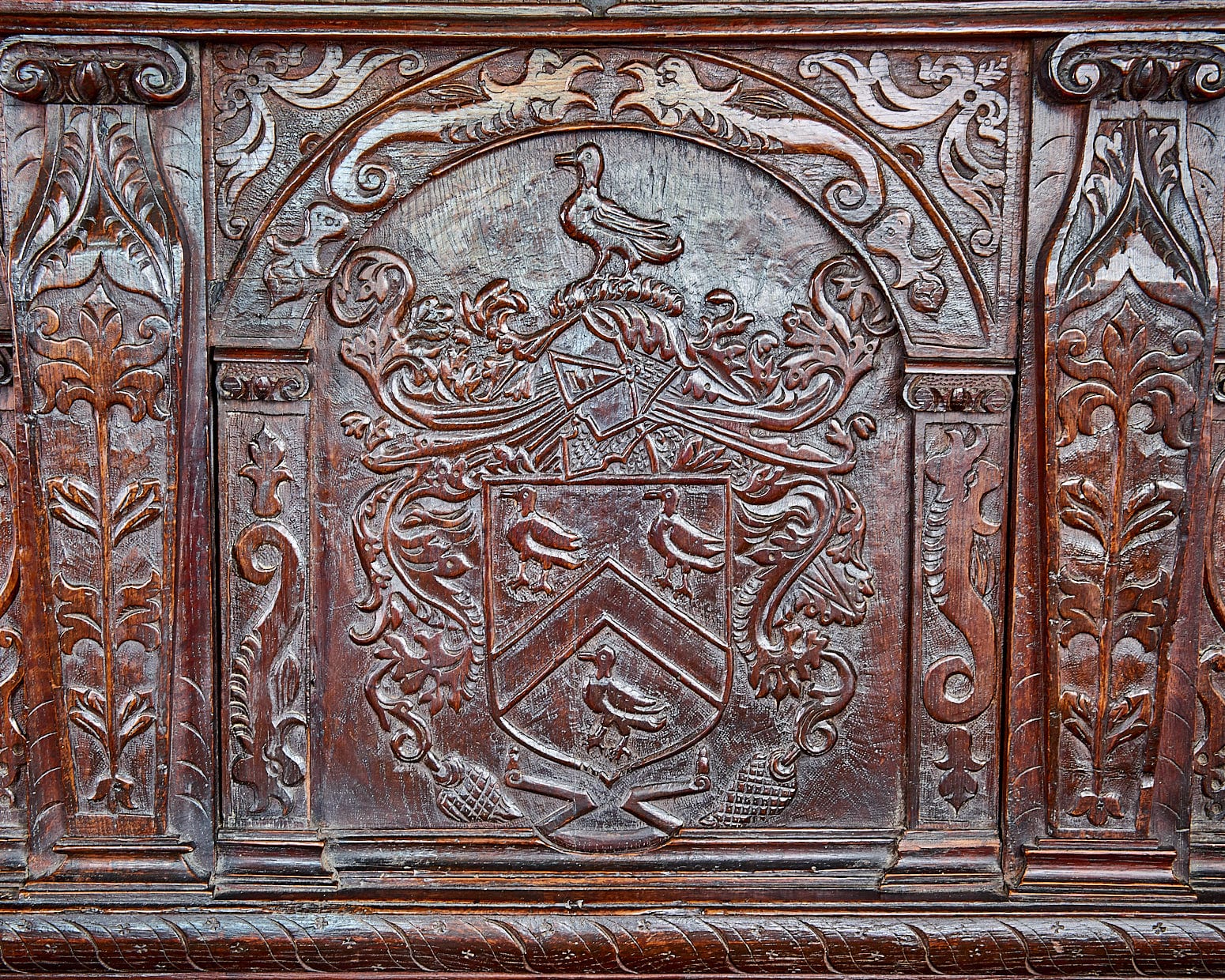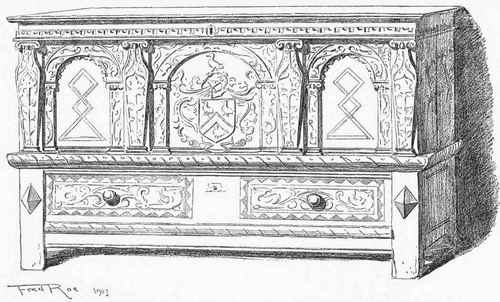The Richard Kilburne Chest
Circa 1630
Hawkhurst, Kent
W 64 1/2" × H 41 1/2" × D 25"
Stock # Marh1512
SOLD
An important and rare joined oak chest of very fine quality, made for Richard Kilburne of Fowler's house in Hawkhurst, Kent.
Fred Roe describes the chest and family below in Chapter XVII. Some Vicissitudes of Old Furniture.
Richard Kilburne, of Hawkhurst, and a master of Staple Inn, was a member of a very old Kentish family, who wrote, amongst other works, the Survey of the County of Kent, which is still sought after and referred to as an authority.* He was born in 1605, and in the year 1631, at the age of twenty-six, he became possessed of the mansion known as 'Fowlers,'in the above-named village, 'God's providence having there left him an inheritance/ It was doubtless in the possession of his father and grandfather, as the 'coat of arms belonging to the family apparently long previous to his day was granted to the Kilburnes of Hawkhurst and London.' †Richard Kilburne died in 1678, the term of his residence at 'Fowlers'having extended to about twenty-eight years. For some reason or other, unexplained, when he vacated the mansion, he left behind him an elaborately-carved piece of furniture, in the shape of a linen-chest with a long drawer under, having its centre panel decorated with the family arms: 'On a field argent, a chevron azure between three bald coots sable, heads argent and beaks tawny.
Crest: A bald coot proper.'*
* 'A Topographie, or Survey, of the County of Kent, with some Chronological, Historical, and other Matters touching the same, and the several Parishes therein, by Richard Kilburne, of Hawkhurst, Esquire. Printed by Thos. Mabb for Henry Atkinson, and are to be sold at his shop at Staple Inn Gate in Holborne. 1659.'
As years passed by several families inhabited the old Jacobean residence known as 'Fowlers,'but about the middle of the last century the attention of Mr. Goodwin Kilburne, Principal of Tudor Hall Academy, and a descendant of the Kentish topographer, was directed to the chest, which had remained in the house as a stock piece of furniture since the first half of the seventeenth century. Sir Edmund Hardinge, who then inhabited the mansion, presented the relic to Mr. Goodwin Kilburne, and it now remains in the possession of his son, Mr. G. G. Kilburne, R.I., the well-known water-colour painter, thus affording an excessively rare instance of a piece of furniture which has returned to the family for whom it was undoubtedly made after the lapse of some two hundred years. The features are the Kilburne arms before mentioned, surmounted by a helmet and lambrequin, four terminal pilasters, and conventional representations of dragons on the uprights and panels of the drawer. It will be noticed that the conventional Gothic flowering, so prevalent about the juncture of the fifteenth and sixteenth centuries, has here degenerated into a queer-shaped object, something resembling a pine-cone, which may be seen towards the bottom of the centre panel on each side of the shield.



